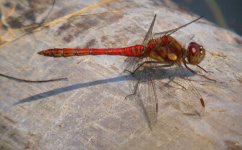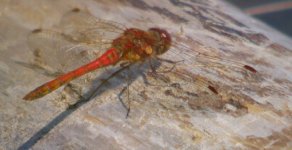CJW
Hit-and-run WUM
All,
I took this photo at lunchtime today and think it is a Ruddy Darter (sympetrum sanguineum). If I'm right it's the first ever Manx record. What makes it even more exciting, I've got a photo (not a good one mind!) of a pair coupled!.
Can someone confirm please - I've lent my fieldguide to someone (doh!).
Thanks,
CJ
I took this photo at lunchtime today and think it is a Ruddy Darter (sympetrum sanguineum). If I'm right it's the first ever Manx record. What makes it even more exciting, I've got a photo (not a good one mind!) of a pair coupled!.
Can someone confirm please - I've lent my fieldguide to someone (doh!).
Thanks,
CJ







